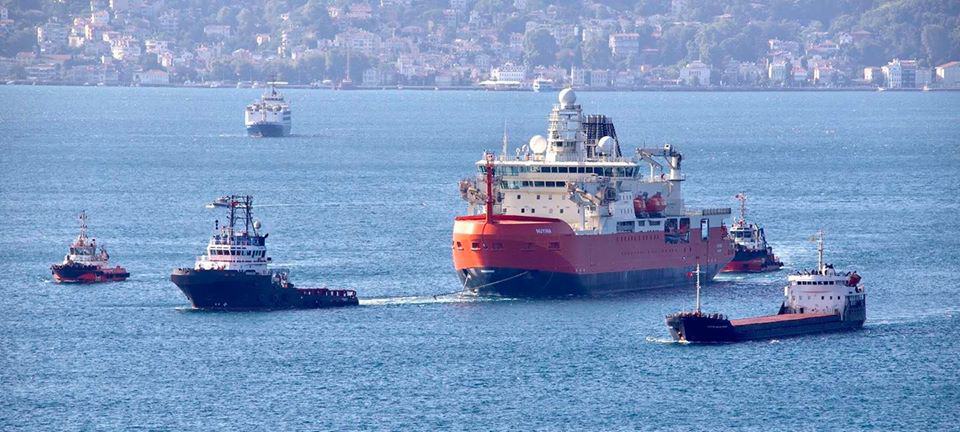Australia’s long-awaited new high-tech Antarctic icebreaking ship is on the move, albeit not under her own power.
The RSV Nuyina has left the shipyard in Romania in Eastern Europe where it was built, and is on a month-long 6 800km journey to the Dutch port of Vlissingen. It is expected to arrive there at the end of August and is under tow by up to three tugs.
This is a big step forward for the project
According to the Australian Antarctic Division, the move to the Netherlands is a big step forward for the project and will give technical experts greater access to the ship after months of COVID-19 restrictions.
Its arrival will allow teams of equipment installers from Western Europe to access the ship for final commissioning of essential propulsion, electrical and navigation systems, after work was suspended due to the pandemic.
Australian Antarctic Division General Manager for Assets and Infrastructure, Rob Bryson, said the 160-metre long, 25 000-tonne vessel is built to break ice 1.65 metres thick.
Main lifeline to Antarctic research stations
The Australian Maritime College says the design, build and 30-year operational and maintenance lifespan of the vessel will cost $1.9-billion, representing the single biggest investment in the history of Australia’s Antarctic program.
“The icebreaker will be the main lifeline to Australia’s Antarctic and sub-Antarctic research stations, and will drive Antarctic and Southern Ocean scientific research, sustaining the next generation of Australian Antarctic scientists,” it explained on its website.
RSV Nuyina – the name means ‘southern lights’ in palawa kani, the language of Tasmanian Aborigines – is expected to arrive in its home port of Hobart around the middle of next year.
Vessel can carry helicopters, barges and trucks
The vessel can deploy a wide range of vehicles, including helicopters, landing barges and amphibious trucks to support the resupply operation.
The new ship provides a modern platform for marine science research in both sea ice and open water, with a large ‘moon pool’ (a shaft through the bottom of the ship) for launching and retrieving sampling equipment and remotely operated vehicles.












